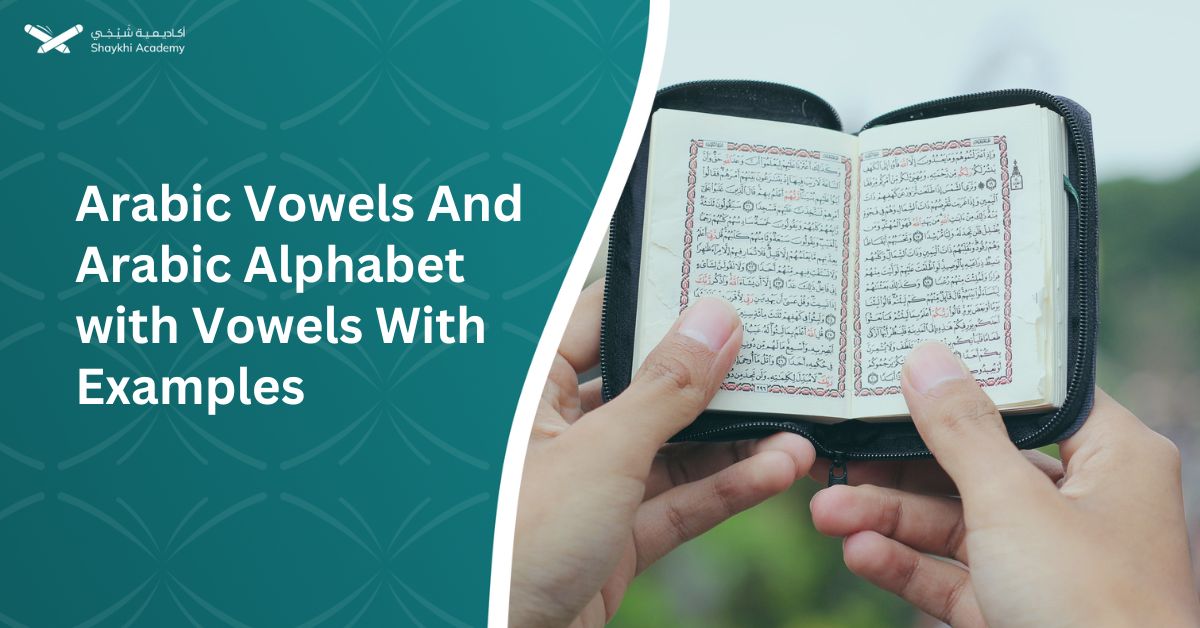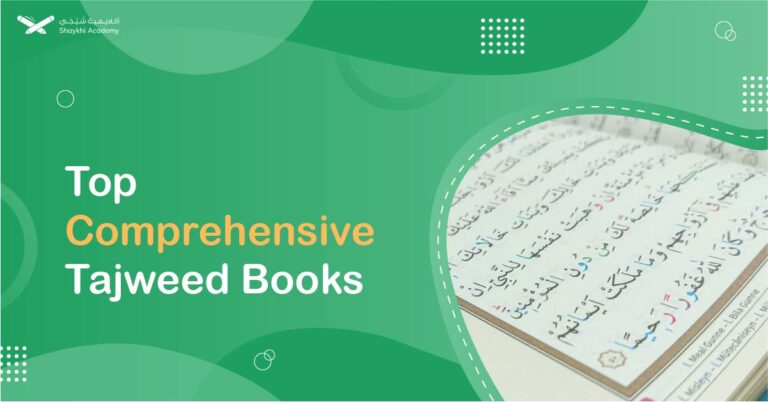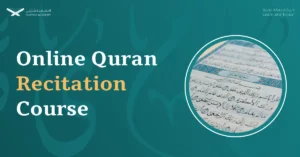Arabic vowels are vital for pronunciation, emerging from the throat and shaped by the lips, giving consonants their voice. There are three short vowels (Fathah, Kasrah, Dhammah) and three long vowels (Alif, Waw, Yaa).
Short vowels use diacritical marks above or below letters to produce distinct sounds, while long vowels extend these sounds. Semivowels, like Waw and Yaa in a silent position, soften the pronunciation.
Mastery of these vowels is crucial for beginners, as they ensure accurate recitation and meaning in Arabic. Their dual function aids both pronunciation and grammar, allowing nuanced expression in the language.
Vowels play a vital role in shaping the sounds and meanings of words in the Arabic language. Vowels in the Arabic language are considered vital elements in the language that help in pronunciation and determining the sounds of words and the sounds of letters. They also serve as markers for the cases of nouns and adjectives in sentences.
What are Vowels in Arabic?
They are vowel sounds that contribute to determining the pronunciation of a word. Vowels emerge from the throat and the lips contribute to their pronunciation.
The benefit of vowels is to give value to consonant sounds, so that a word cannot be pronounced without vowels; Because of its vowels, which do not make it possible to pronounce it without vowels.

Arabic alphabet with vowels
The Arabic language has six vowels: three short vowels (Fathah, Kasrah, and Dhammah) and three long vowels (Alif, Waw, and Yaa).
Arabic alphabet With short vowels
Arabic vowels consist of two types, the first of which is short vowels, which are the grammatical vowels (fathah, kasrah, and dhammah). What are they?
| Short Vowel | Description | Example |
| Fathah | Fathah is represented by a small straight line placed above the letter that makes you open your mouth when pronouncing it and produces the short vowel sound “a”. | بَاب |
| Kasrah | kasrah is indicated by a italic line placed below the letter and represents the short vowel sound “i”. | عمِيل |
| Dhammah | dhammah is symbolized by a small symbol in the form of the letter (و) placed above the letter and indicates the short vowel sound “u”. | سحُور |
Arabic alphabet With long vowels
The second type of Arabic vowels are long vowels and include 3 letters: (أ – ي – و).
| Long Vowel | Description | Example |
| Alif (أ) | Represents the long vowel “aa” sound. | الخضار Khodaar in the Arabic language means vegetables, and the vowel letter “ا” came with it to confirm its pronunciation as follows: “Khodaar.” |
| Yaa (ي) | Represents the long vowel “ee” sound. | عظيم Azeem in Arabic means great, and the letter “ي” comes in it to confirm its pronunciation as follows: “Azeem” |
| Waw (و) | Represents the long vowel “oo” sound | خروف Kharoof in Arabic means sheep, and the letter “و” is used to confirm its pronunciation as follows: “Kharoof” |
What are Arabic semivowels?
This term is given to Arabic vowel letters when they are used in the silent position (Sukoon).
Semi-vowel letters include two letters: the (Waw و) and (Yaa ي).
If we mentioned that these letters give elongated sounds, i.e. (oo and ee), then in this case their sounds are shorter and softer, so the waw is equivalent to the pronunciation of (u) in the word rule and the Yaa is equivalent to the pronunciation of (i) in the word machine.
For example:
- Semivowel “Waw” In the word (حوْل)
- Semivowel “Yaa” In the word (حسيْن)
Arabic vowels for beginners
Learning the vowels in the Arabic language and how to pronounce them is essential, especially for beginners in learning Arabic, because unconsciously pronouncing these letters may be very difficult.
As a beginner, you can learn this by practicing and practicing the pronunciation of each of these letters and collecting examples of them.
How to read Arabic without vowels?
As we just mentioned, reading Arabic without knowing the vowels may be difficult, especially for beginners, but if you have familiarity with the language and knowledge of the context, it may be easier.
Also, in order to read Arabic without these letters, you must know the origin of each letter, its roots, and the common words in it so that you can pronounce it correctly.
How many short vowels in Arabic?
There are 3 short vowels in Arabic which are (fathah – kasrah – dhammah) each of which plays a crucial role in the pronunciation and meaning of words. These short vowels are:
- Fathah (فَتْحَة): Represented by a small diagonal line placed above a letter (ـَ), the fathah indicates a short “a” sound, similar to the “a” in “cat.”
- Kasrah (كَسْرَة): Indicated by a small diagonal line placed below a letter (ـِ), the kasrah signifies a short “i” sound, akin to the “i” in “sit.”
- Dhammah (ضَمَّة): Shown by a small loop or a tiny “9” shape above a letter (ـُ), the dhammah denotes a short “u” sound, similar to the “u” in “put.”
These short vowels are essential in Arabic as they provide the phonetic framework needed to pronounce words correctly and convey precise meanings, making them a foundational aspect of Arabic grammar and phonetics.
Is Arabic written without vowels?
Arabic is sometimes written with vowels, especially in official objects and educational books. Other times, vowels are not used in writing, and this is more common in daily texts, letters, and informal interactions.
Does Arabic only have 3 vowels?
No, Arabic has 6 vowels (3 of them are short vowels and the other 3 are long vowels).
How many vowels are there in the Quran?
Considering that the Holy Quran is the origin of the Arabic language, it cannot be separated from it, as the Arabic language is a branch of the origin.
The Holy Quran contains the same number of vowels as those in the Arabic language, although their number sometimes differs depending on the type of reading, but the general rule is that the number of vowels in the Holy Quran is the same as those in the Arabic language.
What are Arabic semivowels?
As we mentioned above, the semivowels are the letters “waw” and “Yaa”, but when they are in a state of Sukoon, their pronunciation becomes less pronounced.
Double functionality of Arabic vowels
Arabic vowels have a unique property known as double function. What do it mean?
The dual function means that vowels do not perform a single role most of the time. They serve two functions, for example:
1. Pronunciation and grammar:
Short vowels play an important role in guiding pronunciation, helping the learner to pronounce words correctly, and at the same time, these vowels carry essential grammatical information such as case endings and verb conjugations.
2. Flexibility in meaning:
The dual function of Arabic vowels allows flexibility in meaning. By changing or deleting certain vowel marks, different shades of meaning can be conveyed within a word.
The dual function of Arabic vowels adds complexity to the language by providing pronunciation guidance and important grammatical cues.
Unlock the Path to Quranic Mastery with Shaykhi Academy!
Are you seeking the finest Quranic education right from the comfort of your home? Look no further! Shaykhi Academy stands out as a premier online Quran learning platform, dedicated to providing exemplary education to both children and adults.
Why Choose Shaykhi Academy?
- Connect with highly qualified native tutors.
- Flexible scheduling to suit your busy lifestyle.
- Affordable classes tailored for all levels.
- Accessible from anywhere around the globe.
Discover Our Range of Courses:
- Arabic Noorani Qaida: Lay a solid foundation for Quranic studies.
- Online Quran Classes for Kids: Engaging lessons for lifelong learning.
- Tajweed Rules for Kids: Learn to recite with confidence.
- Quran Hifz for Kids: Step-by-step guidance to memorize the Quran.
- Quran for Adults: Introduce yourself to Quran reading and Tajweed rules.
- Online Arabic Courses: Master the language of the Quran.
- Islamic Studies: A wide range of topics related to Islam, including theology, law, Quranic studies, Hadith.
Don’t Miss Out on Your Chance to Excel!
Whether you’re a beginner or seeking advanced knowledge, Shaykhi Academy can guide you! Book your free trial now and make Ramadan 2024 your Quranic turning point!
Conclusion:
Arabic vowels are essential sounds that shape the pronunciation of words, emerging from the throat with the help of the lips. They give consonant sounds their value, making it impossible to pronounce words correctly without them.
Arabic features three short vowels (Fathah, Kasrah, and Dhammah) and three long vowels (Alif, Waw, and Yaa). Short vowels are indicated by diacritical marks: Fathah (a small line above the letter), Kasrah (a line below), and Dhammah (a small loop above), each producing distinct sounds essential for proper pronunciation.
Long vowels in Arabic include Alif (aa), Waw (oo), and Yaa (ee), extending the vowel sounds. Additionally, Arabic has semivowels like Waw and Yaa when in a silent (Sukoon) position, giving softer sounds. Beginners must practice these vowels to grasp Arabic pronunciation, as reading without vowels can be challenging without context.
Despite sometimes being omitted in informal texts, vowels play a crucial role in ensuring accurate recitation and meaning, as seen in the Quran. Arabic vowels also have a double functionality, guiding both pronunciation and grammar while allowing flexibility in meaning through subtle changes.




















